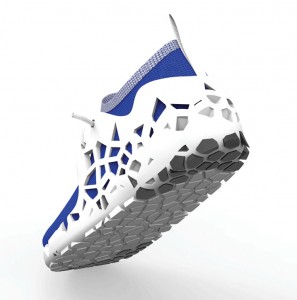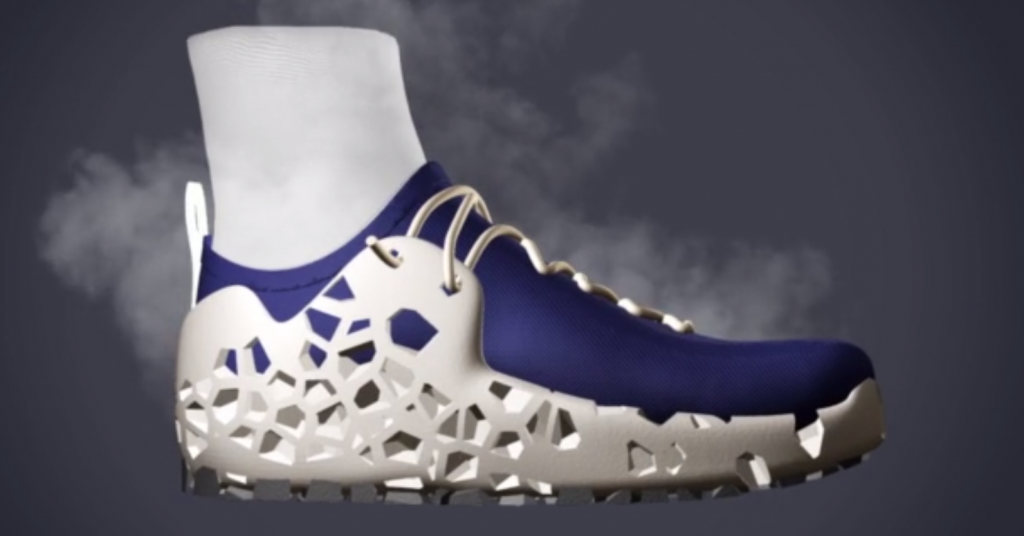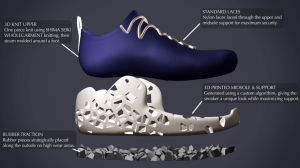
Recently, two industrial design students at the University of Philadelphia in the United States chose to use 3D printing and 3D scanning to create tailor-made shoes for their children in their master's research projects to prevent foot health problems. Their research paper titled "FOOTPRINT: 3D Printed Custom Algorithmic Footwear", their goal is to combine 3D printing, 3D scanning, algorithm model development and advanced textile technology to create the most Frontier shoes.

Matt Flail and Tim Ganter said that when they selected the topic of the paper, they noticed that people have many problems in the manufacture and use of shoes, even those with the most advanced shoes. The reality is that even the best shoes on the market are often designed for the masses, not for a specific user. Since there are no two feet in the world that are exactly the same, even if our own two feet are different, the standard size processing system currently used is far behind. Shoes and foot health are an important part of modern life. Even the best shoes on the market can adversely affect the wearer's body if they are not really fit, such as may cause or aggravate the ankles, knees, buttocks. And problems with back joints and muscles.
“There is another problem. The manufacturing process of contemporary shoes has not changed in the past few decades. Every shoe needs to use expensive molds and tools in the manufacturing process. All the different materials used in the whole shoe need to be corresponding. In addition, a large amount of material is wasted in the manufacturing process, from molded parts made of foam to die-cut materials for uppers. Around 20 billion pairs of shoes are produced every year in the world, about 300 million pairs in the middle. Discarded, and this does not include waste from the factory itself. In addition, EVA – the most common midsole foam – can be used in landfills for 1000 years without decomposition and cannot be recycled.†Introduced.

The main thesis of Matt Flail and Tim Ganter is to re-conceive and design the way the shoes are made from top to bottom, not only to change the way in which the dimensions are processed, but also to the way the manufacturing and materials are used. They studied some of the high quality sneakers on the market, including the Nike Flyknit and the Adidas Primeknit series. They also consulted some podiatrists and footwear experts to determine the most effective way to get the right shoes.
“We visited some podiatrists to find out how to provide the best support for different foot types, what is the most suitable shoe in their eyes, what is the problem with the foot orthosis, etc.†They explained, “We got the biggest The harvest is that there is a huge problem with the matching of the current foot orthosis with the shoes. You can have an orthosis that fits the foot and provides the correct support on the flat, but if it does not match the sneakers correctly, it will bring you The damage will be even bigger."
Based on the above findings, the two graduate students decided to use the photogrammetry software and structured light scanning to perform a 3D scan of the specific user's foot to create a detailed 3D model.
They believe that there are three criteria to be considered in their design process. The first is to reduce material waste in manufacturing and eliminate expensive molds and tooling. Secondly, it can be based on the exact shape and size of the user's foot. Tailored to support needs; in the end they want to reduce or completely eliminate the transitional waste caused by modern manufacturing methods.
In the development of FOOTPRINT, Flail and Ganter tested a variety of materials and 3D printing technology, and finally determined that selective laser sintering (SLS) technology can achieve the best results required by their research projects, they use DuraForm Flex 3D The material is printed with nylon powder to print the insole and the WHOLEGARMENT full-form weaving process to make a specific size upper.
The short video below is the final prototype of the shoes that Flail and Ganter designed for their thesis:
Although their initial research was on sneakers, Flail and Ganter believe that the way to use 3D printed custom shoes is suitable for the prototype process of all types of shoes. The two have recently received an education grant from Shapeways, and with the help of more research funding, they will continue to develop new concepts and shoe structures.
(Editor)
Featuring an original and unique design, our tattoo chair is made of nice touching upholstery. It has been developed for professional tattoo artists. A totally innovative product that features an impressive look, adapted to the sector needs and that will make your job very comfortable. It is portable, suitable for tattoo, beauty salon and nail salon. Our products come with 1 year warranty, welcome to contact us if you have any problems.
Tattoo Bed,Hydraulic Tattoo Bed,Tattoo Massage Table,Portable Tattoo Bed
TOM SPA BEAUTY SALON EQUIPMENT CO.,LTD , https://www.tomspabeauty.com